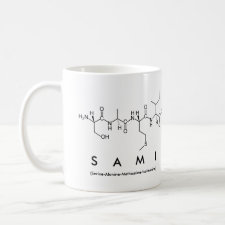
Authors: Ray JV, Mirata F, Pérollier C, Arotcarena M, Bayoudh S, Resmini M
Article Title: Smart coumarin-tagged imprinted polymers for the rapid detection of tamoxifen.
Publication date: 2016
Journal: Analytical and Bioanalytical Chemistry
Volume: 408
Issue: (7)
Page numbers: 1855-1861.
DOI: 10.1007/s00216-015-9296-8
Alternative URL: https://www.researchgate.net/publication/293808442_Smart_coumarin-tagged_imprinted_polymers_for_the_rapid_detection_of_tamoxifen
Abstract: A signalling molecularly imprinted polymer was synthesised for easy detection of tamoxifen and its metabolites. 6-Vinylcoumarin-4-carboxylic acid (VCC) was synthesised from 4-bromophenol to give a fluorescent monomer, designed to switch off upon binding of tamoxifen. Clomiphene, a chlorinated analogue, was used as the template for the imprinting, and its ability to quench the coumarin fluorescence when used in a 1:1 ratio was demonstrated. Tamoxifen and 4-hydroxytamoxifen were also shown to quench coumarin fluorescence. Imprinted and non-imprinted polymers were synthesised using VCC, methacrylic acid as a backbone monomer and ethylene glycol dimethacrylate as cross-linker, and were ground and sieved to particle sizes ranging between 45 and 25 μm. Rebinding experiments demonstrate that the imprinted polymer shows very strong affinity for both clomiphene and tamoxifen, while the non-imprinted polymer shows negligible rebinding. The fluorescence of the imprinted polymer is quenched by clomiphene, tamoxifen and 4-hydroxytamoxifen. The switch off in fluorescence of the imprinted polymer under these conditions could also be detected under a UV lamp with the naked eye, making this matrix suitable for applications when coupled with a sample preparation system
Template and target information: clomiphene, analogue template, tamoxifen
Author keywords: molecularly imprinted polymer, Tamoxifen, 6-Vinylcoumarin-4-carboxylic acid, Clomiphene



Join the Society for Molecular Imprinting

New items RSS feed
Sign-up for e-mail updates:
Choose between receiving an occasional newsletter or more frequent e-mail alerts.
Click here to go to the sign-up page.
Is your name elemental or peptidic? Enter your name and find out by clicking either of the buttons below!
Other products you may like:
 MIPdatabase
MIPdatabase









